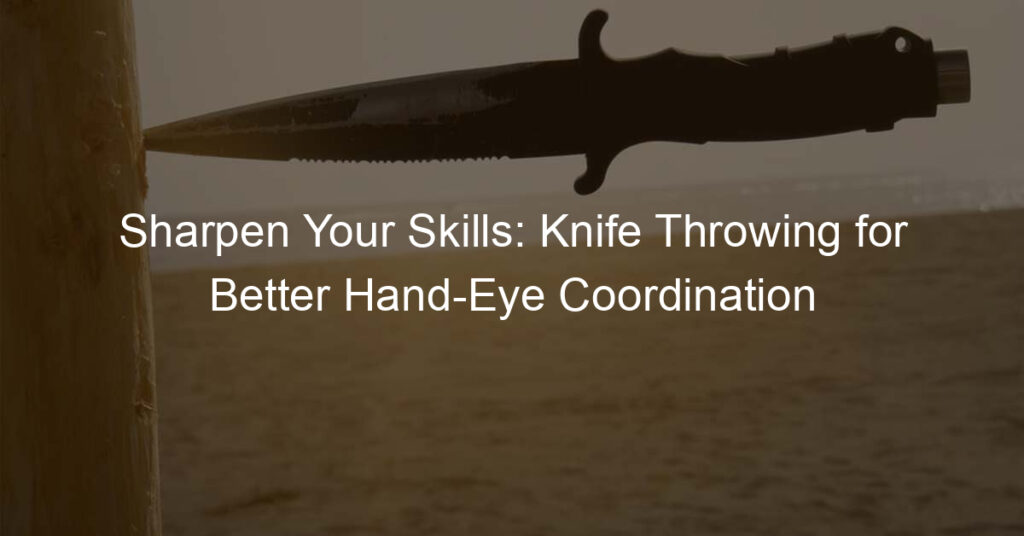If you’re thinking about getting into knife throwing, you might be wondering what the best-throwing knife for beginners is. In this blog post, we’ll give you some tips on choosing a throwing knife that’s right for you. Whether you’re looking for the perfect beginner’s blade or want to upgrade your current setup, we’ve got you covered. So read on and find out everything you need to know about choosing the best-throwing knives for your needs!
What kind of knives are good for throwing?
Throwing knives can be great fun for beginners, but it’s important to choose the right kind of knife. Beginners should look for throwing knives with a sharp point and an undersized handle. The size of a good thrower depends on the user’s height and strength – bigger throwers often require more force to be thrown effectively.
A weight balance between the blade and the handle is also important as it helps keep the knife stable in flight while cutting through the air. Beginners may find that lightweight stainless steel knives are preferable since they’re easier to work with and still maintain their sharpness.
What size throwing knives are best?
When it comes to throwing knives, size matters. Too small and the knives won’t stick in their target; too big and they’ll be unwieldy. The best-size throwing knives are between six to nine inches in length—they’re light enough to throw with precision yet substantial enough to lodge into their intended target.
When selecting what size throwing knives are right for you, make sure to check the blade’s balance when holding it in your hand – a balanced blade will cut through the air more accurately than one that’s out of balance. Also, consider the handles – if they’re too thick then control might be an issue, but if they’re too thin then gripping may be a problem. Ultimately, experimenting with different sizes is key to finding the best fit for you.
Is knife throwing easy to learn?
It turns out that knife throwing isn’t as easy as it looks! It takes a lot of skill and commitment to master the technique. Many instructors cite an “old trick” – practice, practice, and more practice – as one of the keys to success.
When you start to learn the art of throwing, it’s important to develop a consistently accurate throw. Establishing a proper stance and understanding spin is crucial too – after all, this is about getting your blade to complete an exact trajectory to hit its mark. And be sure to have a good landing zone so that you can safely retrieve your knives once they’ve been thrown!
What is the ideal weight for a throwing knife?
The perfect throwing knife weight can vary depending on your style, skillset, and goals. Generally speaking, a throwing knife should fall right around 4-6 ounces. This ratio of weight to size allows for greater speed and accuracy while avoiding strain on the user.
The width of the blade should be wide enough to comfortably grip yet thin enough to accurately stick into the target – typically 1/4″ or less in thickness is ideal for most throwers. The shape is often an important consideration: from tanto points to symmetrical double edges or even oversized cleavers, it’s up to you what sort of overall design fits your preference best!
What is the fastest knife throw?
The fastest knife throw in the world is an impressive feat to behold. To put this incredible skill into perspective, the record for the world’s fastest knife throw stands at a staggering 6.35 seconds! It was achieved with ninja precision by ‘Takayan’, who was a champion in a martial arts competition in the Iwate prefecture of Japan. He currently holds his title after throwing five knives ten meters in distance against targets within just 6.5 seconds. How amazing is that? The Guinness world records caught him on video that you can see on YouTube – it’s worth checking out if you’d like to see this impressive speed and accuracy in action.
How long do throwing knives last?
Throwing knives are a great way to have fun and practice your aim. If you’re in the market for a set, though, you may be wondering how long throwing knives last. The answer to that question depends on the material and craftsmanship of the knives.
Throwing knives made from high-quality materials like carbon steel or stainless steel can last much longer than those made from cheaper alloys like aluminum or zinc. As with any knife, proper maintenance is key to ensuring longevity; keeping it sharpened regularly and wiping away dirt and moisture after use will help extend its life. Finding a set of knives crafted by an experienced knifemaker can make all the difference too!
Conclusion
With so many throwing knives out there to choose from, it can be overwhelming for beginners who are just starting. But when you know exactly what to look for and take into consideration, you can make the best purchase that fits your needs. The key is to evaluate factors like the weight of the knife and its balance, purpose, craftsmanship, and more. If you’re willing to put in the effort to study different knives and conduct a bit of research before making a purchase, chances are you’ll find the perfect throwing knife for beginners. Don’t forget about safety practices too! Be sure to abide by guidelines for safe throwing even if you don’t plan on engaging in any duels or competitions with other throwers anytime soon. With this information at hand, you’ll know exactly why the best-throwing knife for beginners suits your individual preferences and skill level.







